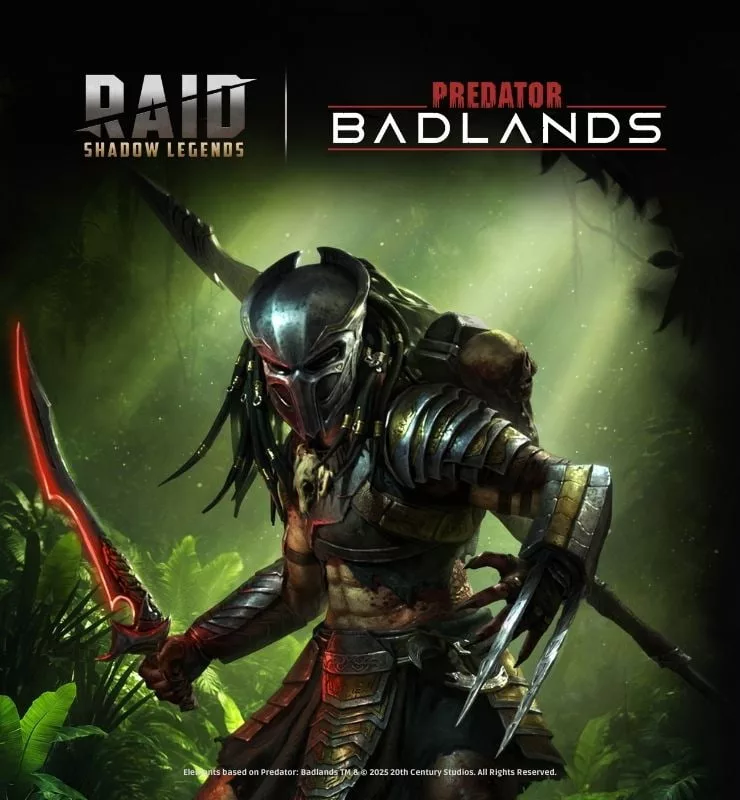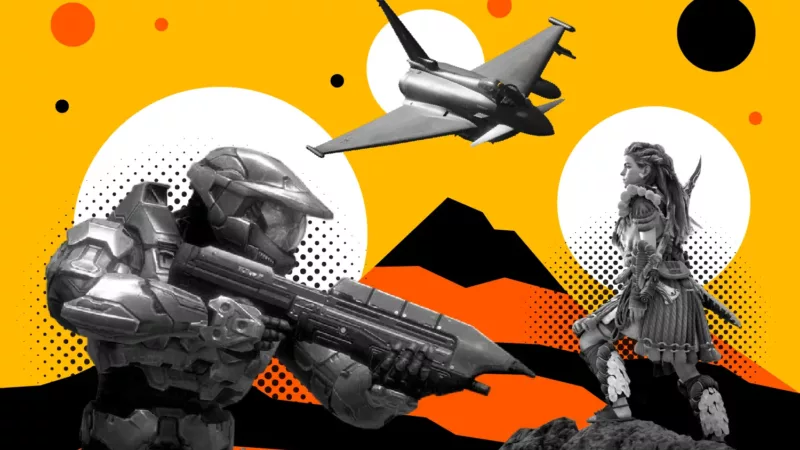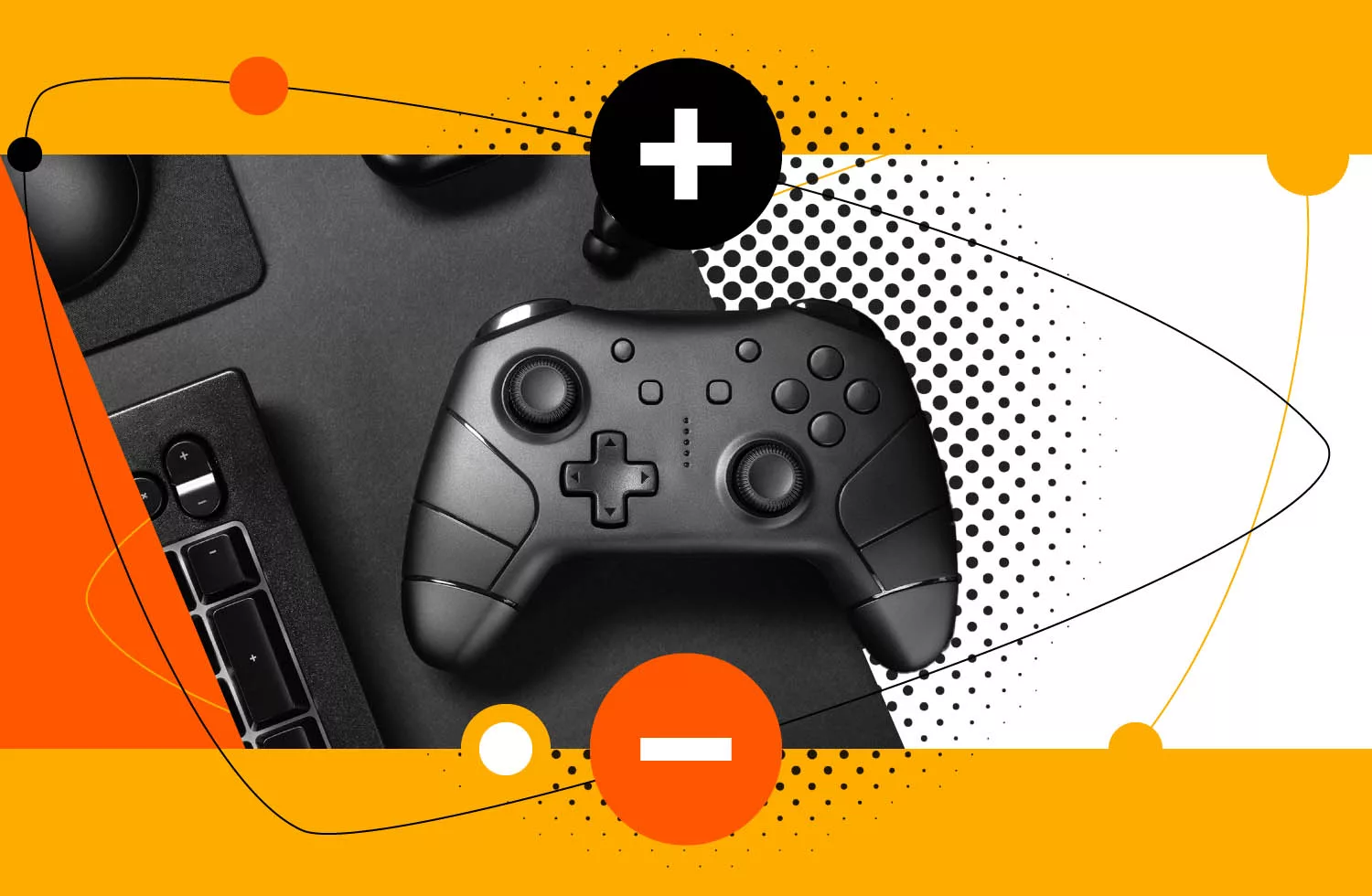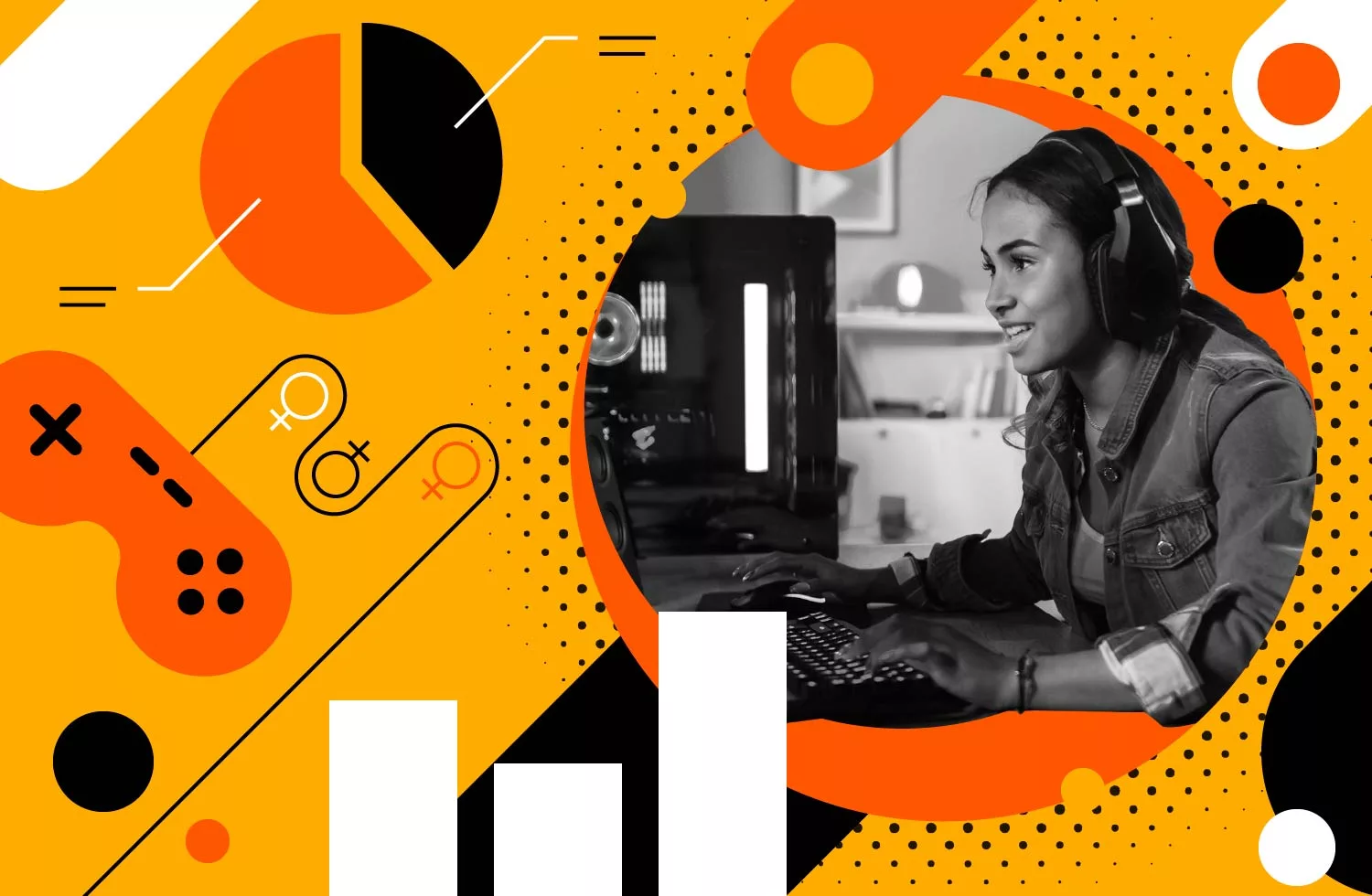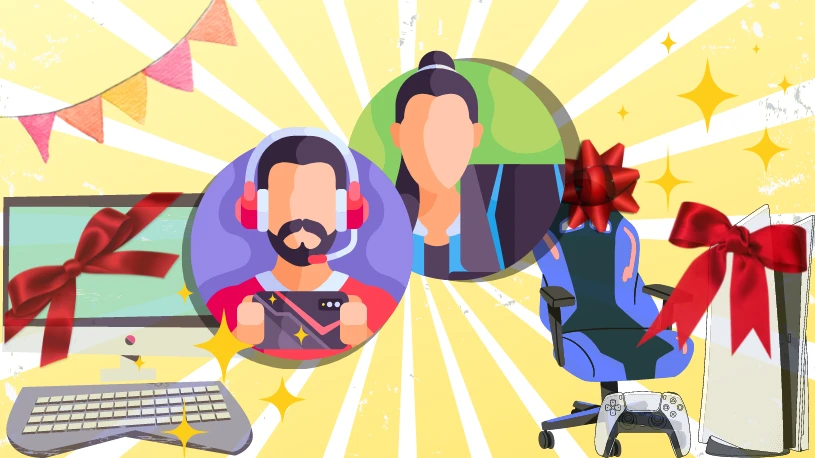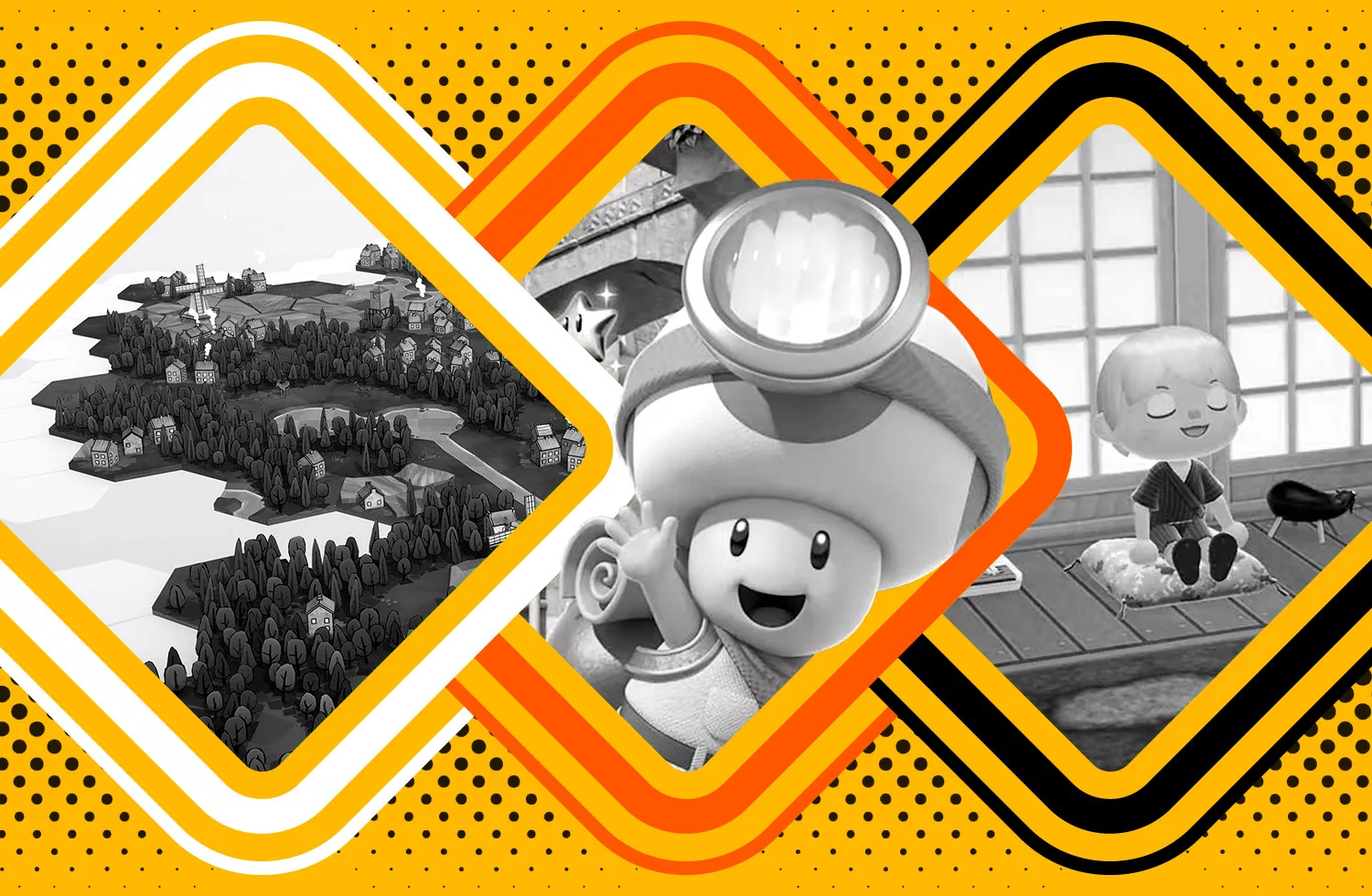
It’s easy to get too technical when it comes to gaming, but the DLC meaning you need to know is pretty straightforward. Yes, there are some nuances that you have to understand.
In terms of the DLC meaning in games, though, the main concept to grasp is that content can be downloaded. What does that mean in practice? That’s what you’ll discover in the following sections.
As well as discussing the finer details of DLC gaming content and how they create living ecosystems, we’ll touch on the pros and cons of this feature.
And, just for completeness, this guide will also highlight some of the best DLC games and the types of extras you can expect to find when you play PC, console, and mobile games.
So, with that being said, here’s everything you need to know about downloadable content in gaming.

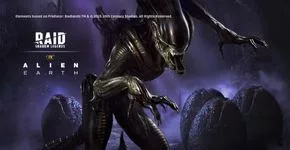
What is DLC Gaming?
DLC gaming stands for Downloadable Content. The type of content you can download will vary. The meaning of DLC in gaming, however, simply refers to anything that enhances a product.
This could be something simple like new character outfits, or it can be more complex downloads such as extra levels. The point to grasp here is that the downloadable content will be a digital add-on. It will be something that brings a new depth and dimension to whatever game you’re playing.
Naturally, the counter to DLC gaming is non-DLC gaming. Games without downloadable content were the main option before the internet. As online gaming flourished and everything from strategy games to adventure games became popular on the internet, DLC came into its own.
Today, players have the option to purchase games and enjoy them as originally intended or they can embrace an evolving storyline by downloading additional content. That’s an exciting prospect and one of the main reasons gaming continues to thrive in the online era.
The History of DLC Gaming
The internet may have made DLC gaming popular, but its roots stretch back a few decades before the online boom of the early 2000s. The forerunner to modern DLC gaming content was a dialup service known as GameLine.
Atari 2600 owners in the 1980s could call the GameLine and download a game. The initial cost for the hardware was $60 and the membership fee was $15. Members could then download games for $1 and keep them for a week.
That was a lot of money to spend on games back in the 1980s, which is why GameLine fizzled out. The fact Atari was able to send packets of data across specially designed phone lines was revolutionary.
It meant players could access a library of games without having to buy dozens of cartridges. It also showed that there was a desire among gamers to get something extra once they’d purchased something.
Expansion Packs Evolve into Digital Downloads
From this starting point in the 1980s, DLC gaming evolved into expansion packs. Although GameLine was great, it wasn’t powerful enough to support the type of upgrades and add-ons companies wanted to sell.
PC gaming started to take off in the 1990s and games such as the Sims were leading the way with regards to evolving environments and tasks with no specific end goal.
Expansion packs played into this trend of creating digital worlds that, like our own, are living, breathing entities. This trend is even more popular today and that’s why developers have made expansion packs a digital phenomenon.
Sega’s Dreamcast was the first console to offer DLC in the first decade of the 2000s. Although the add-ons were small and somewhat trivial in nature, they built on the innovations of the past and, moreover, started a content war among the major console creators.
PlayStation didn’t immediately follow Sega into the DLC gaming arena, but Microsoft did with Xbox Live. Microsoft’s original batch of content, including certain games, was free for Xbox Live members. This proved extremely popular, and PlayStation soon joined the party.
From new cars for games such as Gran Turismo to extra songs in Guitar Hero, DLC gaming content flooded the industry from 2010 onwards, which is why it’s now a mature market.
What Types of DLC is Available?
Gaming DLC can be free or cost money. Whatever category the add-ons fall into, the aim is to bring a new dimension to the game you’re playing. As a general guide, here are the types of in-game DLC you’ll be able to download:
Extra Features
These add-ons can be anything from new characters to extra levels. You’ll also find that these features can add tasks and challenges to existing parts of a game. For example, you might have completed a level before downloading some content.
Once you’ve installed the upgrade, the same level might contain extra enemies, more puzzles, or secret bonuses that change the overall experience.
Character Upgrades
Some of the most popular DLC upgrades are weaponry and skills. Otherwise known as character upgrades, these extras are designed to make your character a little bit tougher, slightly more durable, a better fighter, or simply have more weapons at their disposal.
The benefit of new skills, tools, and powerups is to help you progress in the game, beat enemies you couldn’t before, or just be better as a character.
Cosmetic Content
Not all DLC gaming content is designed to make you stronger, faster, and more skilled. There are some upgrades that are simply there to make characters or settings more aesthetically pleasing. These add-ons can be anything from different scenery, new outfits for a character, or skins for weapons.
This type of DLC in gaming won’t necessarily make you a better player or unlock new parts of the game. It’s simply there to add a new sparkle to what’s already there.
Loot Boxes
One of the more controversial types of DLC content in gaming are loot boxes. These boxes cost money and they contain a random prize. Sometimes the value of the prize is less than what you paid for the box, sometimes it’s more. This is the controversial element.
Some critics have likened loot boxes to gambling. Regardless of your opinion, loot boxes are a type of add-on that can unlock new characters, weapons, skins, upgrades, and in-game credits.
Season Passes and Special Prizes
Another type of DLC gaming content to look out for is passes. These passes will grant you early access to upcoming DLC content. The passes can also get you entry to prize draws or contests with special prizes.
What Games with DLC Can I Play?
Now we’ve broken down the DLC meaning, let’s run through some of the top games from this genre. The market is always changing, but it’s usually the case that DLC content is used for games that either have no start/end points or have overarching stories.
This is because the add-ons can be used to expand whatever universe the developers have created. Some of the DLC gaming hits you can try are:
- Call of Duty
- Hitman
- The Outer Worlds
- Diablo
- Baldur’s Gate
- Red Dead Redemption
- Grand Theft Auto
- Dragon Age
- Borderlands
- Fallout
Where Can I Find DLC Games?
You can find DLC content online through a variety of reputable sources. The main places to get digital upgrades and add-ons for your favorite PC and console games are:
Each store has its own way of distributing DLC. In general, you’ll be given a special code once you’ve made a purchase. You then have to go through a link and input your code. This verifies your transaction and initiates the download.
The time it takes for the download to complete will depend on the size and type of your upgrade, as well as your device and internet connection. Some DLC game upgrades can take minutes, others can take hours (!).
What About Mobile DLC Gaming Content?
There is some crossover between DLC content and in-app purchases for mobile games. Both types of upgrades come at a cost and they both add something to your experience. However, in-app purchases aren’t necessarily designed to help you advance or unlock something new.
Instead, they’re typically used to buy more ammunition/health/time. They can also be used to get extra lives or replenish your in-game credits instantly rather than waiting for a set period of time.
In general, new levels, characters, and features are added to mobile games for free. They’re added to the mix each time you install app updates. For example, Mortal Kombat for iOS often adds new fighters or challenges after an app update.
Because this game uses the freemium model, they typically don’t cost anything. However, there may be ways to increase the speed at which you can make use of these upgrades by paying. So, in this regard, mobile gaming DLC could be described as a hybrid system.
Downloadable Gaming Content Summarized
Some people love gaming DLC, other people don’t. There was a time when a publisher put out a game and it was complete. There are some benefits to this, like a one-off cost. Customers pay one price and they get the full experience.
This set-up also means that there’s a definite start and end point. For example, if you’re playing a shooter without additional DLC, you know that the game is complete once you make it through the final level. Some people like being able to draw a line under their experience.
Other players get to the end of the game and feel a sense of bathos. In other words, they’re left with a feeling of disappointment and anticlimax that it’s over. DLC allows developers to keep the dream alive.
There are players that love this. Once they start a game, they become invested in the storyline, and they want it to continue. This is why DLC is thriving. There are some games that can’t be contained in a single product.
Yes, bringing out a sequel can keep things going. However, sequels often skew the main story in a slightly different direction. DLC keeps the setting and story the same, but it adds new wrinkles to the mix. Games are designed to be played and replayed.
Some people are happy to repeat the same experiences over and over again. Some people aren’t. For those that don’t mind repeats, non-DLC games are great. For those that want an ever-evolving experience, there are plenty of DLC games out there!

